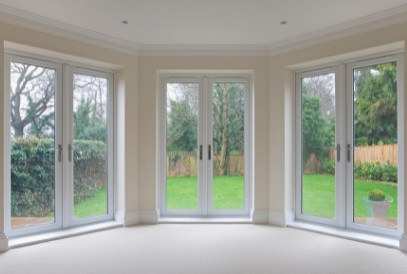Window dimensions: what size does a standard window have? And what height should a door have?
Today I want to talk to you about
standard window sizes : if you are considering renovating your home windows or want to build a new home, then it is important to know the typical
standard window sizes to make the best choice. My name is Elia and, working at Windowo, I deal with
window hardware every day: for this reason I'm sure I can help you in this particular decision.
Let me start by reminding you that the
window is truly a crucial element in every home because it influences both the aesthetics and the thermal and acoustic performance of the interior spaces. For this reason, whether you are planning a new home or a renovation, choosing the size of your windows is an essential step.
In this article we will see together what the standard window sizes are and I will give you some practical advice to help you make informed decisions for
windows and doors.

What dimensions does a standard window have?
- Single hung window dimensions : These windows offer a combination of simplicity and elegance. Standard measurements for single-leaf windows vary, but are often 60-70cm wide by 120cm high or 70cm wide by 140cm high;
- Double-Hung Window Sizes : Double-hung windows are versatile and offer a wide opening. Standard sizes for this type of window range from 90cm to 120cm in height, with variations such as 110cm x 150cm, 120cm x 130cm, 120cm x 140cm;
- French door dimensions: French doors are the ideal choice to have a larger opening. The dimensions of single-leaf French windows are 90 cm x 255 cm, while for double-leaf French doors they are 120 cm x 245 cm.
Standard window sizes may vary depending on the country you are in, but in general I can make some general considerations. In Europe, for example, standard windows are often made according to the metric system and the dimensions are expressed in millimeters.
Window width
As regards the window width, a standard window
can vary from 600 to 1200 millimetres . Again, the width depends on the specific needs of the room and the amount of natural light desired. It is important to consider not only the size of the windows but also the aesthetic aspect: a larger window can create a more pleasant visual effect.
Windows height
As regards the window height, a standard window
can vary from 900 to 1200 millimetres . The measurement takes into account the space necessary to ensure adequate lighting and ventilation of the room. However, note that the height can be customized based on your preferences or specific building requirements.
Other factors that influence standard window sizes
- It is possible to find different types of opening windows . The most common options are the hinged opening and the bottom-hung opening. The casement opening is the traditional one, in which the window opens inwards or outwards. The vasistas opening, on the other hand, is characterized by an opening towards the outside with a hinge located in the upper part of the window. This option is particularly suitable for areas with limited outdoor space;
- It is also important to consider the material of the windows . Standard windows can be made from a variety of materials, including wood, aluminum, and PVC joinery . Each of these materials has different advantages and disadvantages, which is why it is important to make an informed choice based on your needs for thermal insulation, resistance to atmospheric agents and maintenance. If you have any doubts, read the dedicated article: PVC or aluminum fixtures? Selection guide ;
- When proceeding with the planning or restoration of a residence, one of the critical aspects to consider is the choice of window dimensions, since these determine the entry of natural light into the spaces;
- It is essential to note that current window solutions are designed to guarantee optimal performance in terms of thermal insulation and acoustic insulation . However, to achieve this goal, they must comply with specific structural characteristics, including the definition of the standard dimensions of the openings;
- In general, in modern buildings the use of windows with standard heights of 120-140 cm is preferred. Also, it is important to keep in mind that there are legal requirements regarding minimum window heights that must be met, and window frames must be installed at least 1 meter above the floor.
Recommendations for choosing window sizes
- Brightness and views : consider the orientation of your home and the importance of maximizing natural light and panoramic views;
- Thermal and acoustic insulation : Modern windows are designed to offer excellent insulation. Choose low-e glass for better climate control;
- Style and aesthetics : The size of the windows should be in keeping with the architectural style of your home;
- Local Laws : Check to see if there are any local regulations mandating minimum heights for windows.
This is just the beginning of our journey into the world of standard window sizes. Read on to learn more and make informed decisions for your living space.

What are the standard dimensions for fixtures for?
Standard window sizes
offer benefits to both manufacturers , who can make windows more efficiently,
and installers , who can assemble them faster.
There are also clear benefits for consumers : it is possible to obtain fixtures in a shorter time and at lower costs, regardless of the material chosen.
However, it is possible to request windows and French windows with customized sizes from the
fabricator (at a higher cost).
Non-standard openings are more common in older buildings, in historic buildings with high ceilings and in homes such as attics, where the ceilings may have irregularities. In these cases, it is advisable to consult a professional to obtain accurate measurements.
If you want long-lasting fixtures, it is advisable to opt for high-quality profiles, such as those offered on Windowo. In
our catalog you will find a wide range of PVC and aluminum frames with thermal break, available in different sizes and capable of guaranteeing excellent performance in terms of thermal and acoustic insulation.
How is a window measured?
A very practical and useful topic is:
how to correctly measure window sizes . If you are thinking of replacing or installing new windows, it is important to know the right measurements to ensure a perfect fit.
- First, make sure you have the necessary tools: a tape measure and a pencil will suffice. Before you start taking measurements, clean the window well so you can see the edges and details well;
- Start by measuring the height of the window. Place the tape measure vertically along one side of the window, starting from the sill to the top lintel. Be sure to hold the tape measure straight and parallel to the window frame to get an accurate measurement. Take note of the measurement;
- Now let's move on to the width of the window. Measure the width of the frame horizontally from side to side. Make sure you also factor in the side frames, if any. This will be your horizontal measurement;
- To be even more precise, you can take a second width measurement slightly higher than the first, in the center of the frame. This will give you a more accurate view of the dimensions, considering any variations in the frame;
- If you plan to replace your window sashes as well, it's important to take measurements for them as well. Measure the height and width of each door, making sure to measure them separately if there are multiple doors.
Once the measurements have been taken, it is possible to purchase new windows or start custom-made ones.
Window measurements: what minimum dimensions must windows have?
Window sizes can vary greatly based on your personal needs and building style, but there are some general guidelines to follow. In general, windows should be large enough to provide adequate natural lighting and ventilation indoors.
Regarding minimum window dimensions, the
window width should be at least one tenth of the floor area of the room in which it is placed. For example, if you have a 20 square meter room, the window should be at least 2 meters wide. This ensures an adequate flow of light and also allows for easy evacuation in the event of an emergency.
As for the
window height , this should be high enough to allow a pleasant view of the outside and to let in fresh air. In general, a minimum height of 10% of the ceiling height of the room is recommended. So if the ceiling is 3 meters high, the window should be at least 30 centimeters high.
In addition to the minimum dimensions, it is also important to consider the
shape of the windows . Traditional casement windows are a popular option, but you can also opt for sliding, top-hung or sash windows. The choice of form will depend on your personal taste and the aesthetics of the building.
Another aspect to consider is the
relationship between the size of the windows and the total surface area of the walls. In general, it is recommended that windows make up at least 10-15% of the total wall area. This will ensure adequate light entry and a balanced aesthetic appearance.
Finally, before proceeding with the installation of windows, be sure to check
local codes and zoning restrictions. In fact, some cities may have specific rules about the size and location of windows that must be followed.
Conclusions on the standard window size
In conclusion, window sizes
depend on several factors and may vary based on your personal preferences . It is important to consider the architectural style of the home, desired natural lighting, ventilation needs and the surrounding environment. Also remember to consider the type of window material, as it may affect the size and amount of natural light entering your home.
I hope this information has been helpful to you in better understanding standard window sizes and
making the best choice for your home. Always remember to also take into consideration the aesthetic aspect and the specific needs of your room. If you want to know more about me you can read
this article . Good choice of windows!









